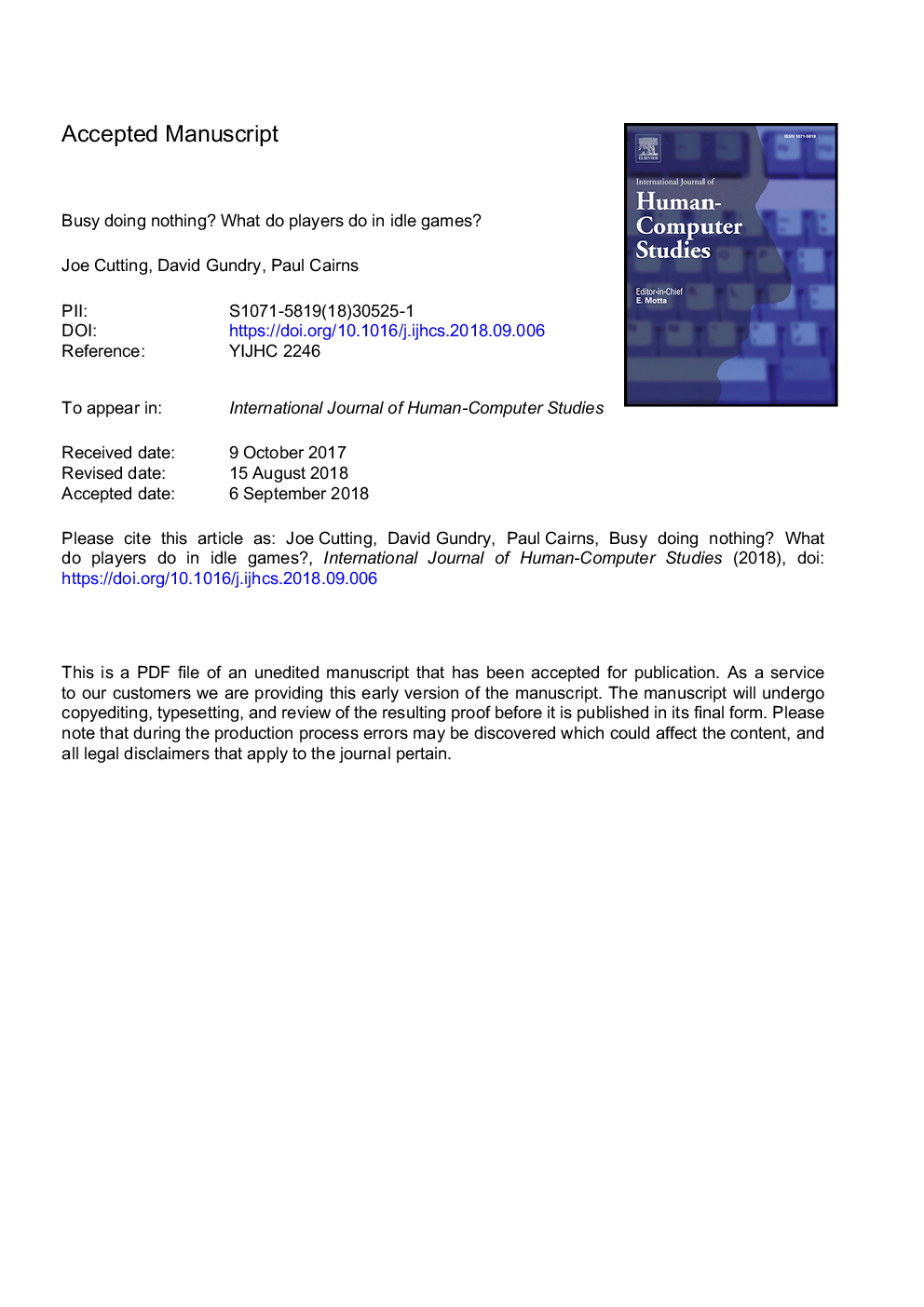| Article ID | Journal | Published Year | Pages | File Type |
|---|---|---|---|---|
| 10139249 | International Journal of Human-Computer Studies | 2019 | 22 Pages |
Abstract
Idle games - games where waiting for extended periods is an important dynamic - are increasing in popularity. The game Neko Atsume, a mobile game about collecting cats, is an extreme example of this genre where progress can only be achieved when the game is switched off (so-called “progress while gone”). Do such waiting games engage players? To answer this, we conducted a large survey (N=1972) to understand what players are doing when they play Neko Atsume. Players are highly “engaged” in Neko Atsume as they interact with and around the game in four distinct ways: Time spent playing, Direct sociability; Social media sociability and Checking frequency. However, these characteristics of engagement in Neko Atsume do not fit well with existing models of engagement. We propose that, in future studies, game engagement in idle games could be considered as a habit which players acquire and maintain.
Related Topics
Physical Sciences and Engineering
Computer Science
Artificial Intelligence
Authors
Joe Cutting, David Gundry, Paul Cairns,
